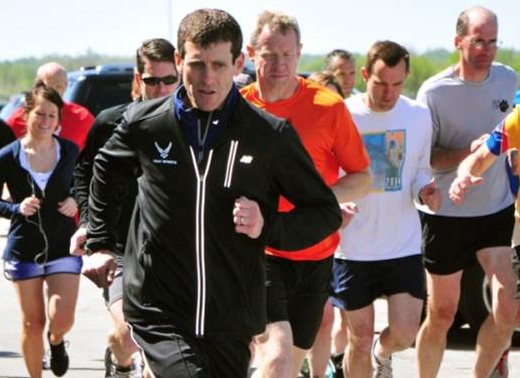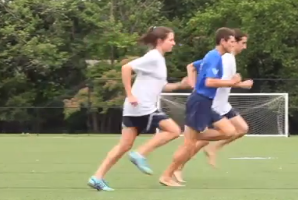 I recently posted a Dr. Mark’s desk piece outlining “5 Tips on How To Improve Your Running Form.” As a followup to that instructional article, here is a short, helpful video as part of the United States Air Force Efficient Running Project.
I recently posted a Dr. Mark’s desk piece outlining “5 Tips on How To Improve Your Running Form.” As a followup to that instructional article, here is a short, helpful video as part of the United States Air Force Efficient Running Project.
As you focus on form, not speed, here are 3 steps to get you started:
1. Get tall
2. Run in place with elastic rhythm
3. Move face forward (Thank you to Jae Gruenke of The Balanced Runner for the “face forward” cue. )
After mastering these 3 elements, you can try to go faster by pushing a bit, while extending from the hips. Using the glutes is the key to speed. You might also want to go back and watch “The Principles of Natural Running” video (go to 6:55).
Most runners naturally reach forward with the foot in an effort to lengthen the stride. This is made easy now due to the unnecessarily thick slab of foam under the heel of running shoes. Many runners now understand that landing closer to their center of mass is more efficient, but still struggle to make the form change.
The “1-2-3 run” sequence makes it easier to keep footstrike in the correct position. Practice first by running very slow. I teach many very faster athletes and fit military soldiers to run extremely slow as drill work when learning this footstrike placement and movement pattern.
 Frequently, I’ll have the athlete run in place for one minute and then increase the speed by maybe one mph each minute until he or she reaches a comfortable aerobic pace. This may seem to simple to be true, but running slowly with the technique will help you run faster automatically.
Frequently, I’ll have the athlete run in place for one minute and then increase the speed by maybe one mph each minute until he or she reaches a comfortable aerobic pace. This may seem to simple to be true, but running slowly with the technique will help you run faster automatically.
Placing the foot out in front uses momentum to carry the body up over the position of footstrike. By landing closer to center you lose no forward momentum. As you increase speed, generate propulsion for the speed increase from the posterior chain (primarily the glutes).
Here is a short testimonial from Col Randall Richert who attended a USAF-sponsored clinic at Moody AFB (in Georgia) with his cadre of Security Forces Airmen, all of whom were already at the highest fitness standards. So these athletes were already strong and fit; they just needed to learn the skill.
Col Randall Richert:
the group of 100+ we sent you at Moody was made up of our PTLs, trainers, and then a large group of those having “slow” run times preventing them from achieving 90% on the AF PT. This last group was required to take monthly diagnostic PT tests so we had all the data on them and saw slow progress on the running plan we had. 6 weeks after your clinic we had completed all their re-evals and we saw a 1:30 average drop in run time based mostly on technique and form.
So focus on the body position first, feel the rhythm, and over the next few weeks to months the improved efficiency and speed will come naturally. Stay in the aerobic zone, do not force it.
Happy Holidays!

something else to help me coach
thanks!
Dr. Mark,
Thank you very much for your excellent instructions on natural running. I have been trying to follow your advice on activating the glutes in running. Here is an issue that has been puzzling me for some time. Should I active the glutes before the legs land or should I activate the glutes to push as soon as my legs land? It seems to me that activating glutes before landing will cause over-stride and heel landing. It would be great if you could some feedback. Thank you very much.
Very helpful. Thank you very much!!